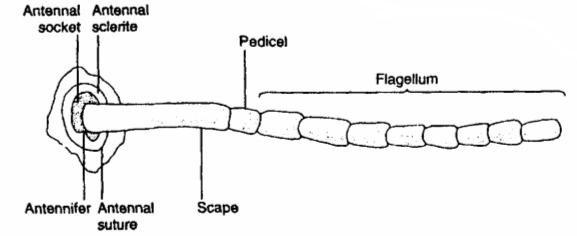Have you ever noticed that there are lots of antennas (or antennae) around you? In this article we will discuss the two type of antennas.
Natural antenna
![Types of natural antennas (credit: L. Shyamal (Own work) [CC BY-SA 2.5], via Wikimedia Commons)](https://whyhowscience.files.wordpress.com/2015/11/ant2.png?w=640&h=320)
Types of natural antennas (credit: L. Shyamal (Own work) [CC BY-SA 2.5], via Wikimedia Commons)
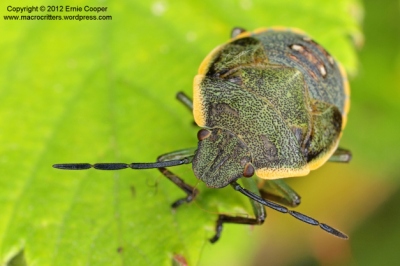
A green stink or shield bug (credit: https://goo.gl/gUXLGR)
They are sensory organs, although the exact nature of what they sense and how they sense is not the same in all groups, or always clear. The functions may variously include sensing touch, air motion, heat, vibration (sound), and especially olfaction (smell) or gustation (taste). Mosquitoes are able to detect sounds as well as odors with their antennae and some flies are able to gauge air speed while they are in flight. Ants and honey bees are able to communicate with nest mates by touching antennae, which allows them to pass on information about food sources and danger [see: http://goo.gl/9ojaCq ]. For more photos of insect antennae visit: The Dragonfly Woman.
The three basic segments of the typical insect antenna are
(1) scape or scapus (base),
(2) pedicel or pedicellus (stem), and
(3) flagellum, which often comprises many units known as flagellomeres.
The scape is mounted in a socket in a ring-shaped region of insect’s body hardened by conversion into a protein called sclerotin, often a raised portion of the insect’s head capsule. That projection on which the antenna pivots is called the antennifer. The whole structure enables the insect to move the antenna as a whole by applying internal muscles connected to the scape.
The pedicel (the second segment) contains the Johnston’s organ which is a collection of sensory cells. Also, it is flexibly connected to the distal end of the scape and its movements in turn can be controlled by muscular connections between the scape and pedicel.
The number of flagellomeres can vary greatly between insect species. True flagellomeres are connected by membranous linkage that permits movement. Though the flagellum of “true” insects does not have any intrinsic muscles, some other Arthropods do however have intrinsic muscles throughout the flagellum.
Now, working of antennae varies from one insect to another, and like many other biological processes, it’s a complicated process to be explained in simple words. In a nutshell, there are hair like structures on antennae, their main purpose is sensory and for this reason they are usually called sensilla (sensory receptors or sensors, singular sensillum) rather than hairs. For detailed structure and working of antenna of the rove beetle Aleochara bilineata, visit: http://cronodon.com/BioTech/Insects_antenna.html
Artificial Antenna
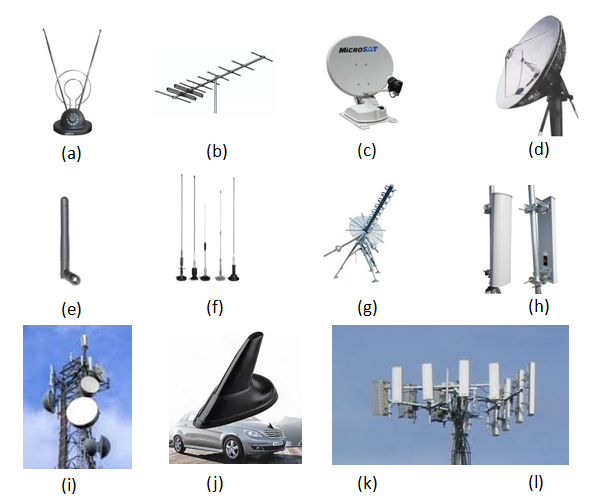
Some common types of artificial antennas (credit: http://www.sharetechnote.com/html/Handbook_LTE_AntennaPerformance.html)
It is a device that converts electric signal into radio waves and vice versa. The origin of the word antenna relative to wireless apparatus is attributed to Guglielmo Marconi (1874-1937). Because of his prominence, Marconi’s use of the word antenna (Italian for pole) spread among wireless researchers, and later to the general public.
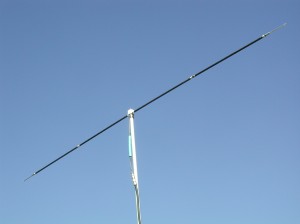
Dipole Antenna (credit: http://www.ventenna.com/HFp-D.html)
The first antennas were built in 1888 by Heinrich Hertz to prove the existence of electromagnetic waves predicted by the theory of James Clerk Maxwell. Hertz placed dipole antennas (see photo above) at the focal point of parabolic reflectors for both transmitting and receiving. Electromagnetic waves have both electric and magnetic components that are inseparable. The planes of these fields are at right angles to one another and to the direction of motion of the wave. Radio signals are a form of electromagnetic wave, and they are the way in which radio signals travel. [see: http://goo.gl/kq2eUm ]
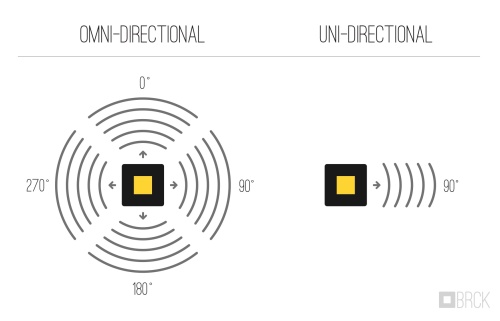
Omnidirectional vs Unidirectional Antennas (credit: Erik Hersman, https://goo.gl/o6k0qb)
According to their applications and technology available, antennas generally fall in one of two categories:
1. Omnidirectional or only weakly directional antennas which receive or radiate more or less in all directions.
2. Directional or beam antennas which are intended to preferentially radiate or receive in a particular direction or directional pattern.

Electromagnetic Wave (credit: SuperManu (Self, based on Image:Onde electromagnetique.png) [GFDL, CC-BY-SA-3.0 or CC BY-SA 2.5-2.0-1.0], via Wikimedia Commons)
